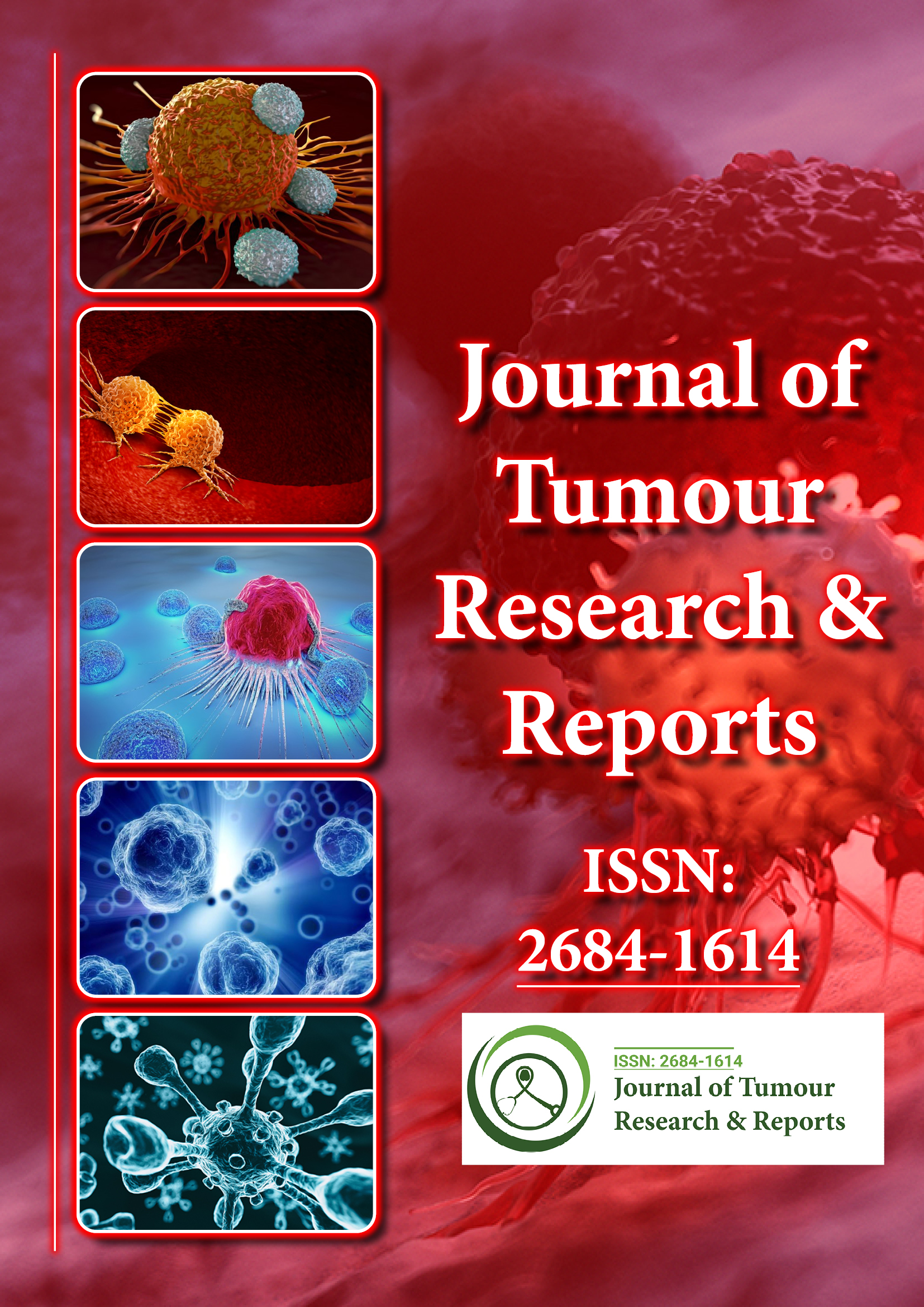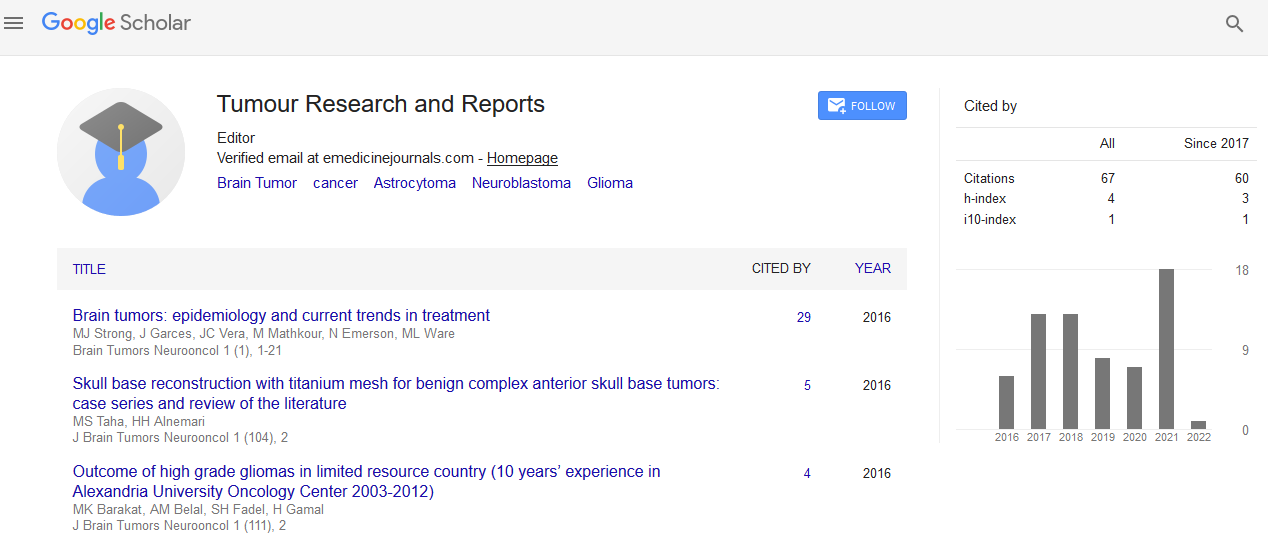Indexed In
- RefSeek
- Hamdard University
- EBSCO A-Z
- Google Scholar
Useful Links
Share This Page
Journal Flyer

Open Access Journals
- Agri and Aquaculture
- Biochemistry
- Bioinformatics & Systems Biology
- Business & Management
- Chemistry
- Clinical Sciences
- Engineering
- Food & Nutrition
- General Science
- Genetics & Molecular Biology
- Immunology & Microbiology
- Medical Sciences
- Neuroscience & Psychology
- Nursing & Health Care
- Pharmaceutical Sciences
Perspective - (2023) Volume 8, Issue 4
A Novel Approach to Cancer Research: Lipid Droplets
David Crago*Received: 14-Nov-2023, Manuscript No. JTRR-23-23186; Editor assigned: 17-Nov-2023, Pre QC No. JTRR-23-23186 (PQ); Reviewed: 01-Dec-2023, QC No. JTRR-23-23186; Revised: 08-Dec-2023, Manuscript No. JTRR-23-23186 (Q); Published: 15-Dec-2023, DOI: 10.35248/2684-1614.23.8:207
Description
Cancer is a complex and multifaceted disease that affects millions of people worldwide. Researchers continuously strive to understand the various facets of cancer biology to develop effective treatment strategies. One area of growing interest is the role of Lipid Droplets (LDs) in cancer and, more specifically, in Cancer Stem Cells (CSCs). Lipid droplets are dynamic organelles that store neutral lipids, such as triglycerides and cholesterol esters. Traditionally, LDs were thought to play a passive role in lipid metabolism. However, recent studies have identified their active participation in cancer progression, metabolism, and the regulation of CSCs.
The emerging role of lipid droplets in cancer
In recent years, researchers have discovered an association between LDs and cancer biology. LDs have been observed to accumulate in cancer cells and promote various aspects of cancer progression, including proliferation, invasion, and drug resistance. The following sections delve into these roles of LDs in cancer.
Proliferation and growth: Lipids are significant for the rapid cell division characteristic of cancer. LDs provide a readily available source of lipids for membrane synthesis and energy production. LDs store fatty acids, which can be mobilized and utilized for energy during times of increased metabolic demand, such as cell proliferation.
Invasion and metastasis: LDs can supply cancer cells with fatty acids required for membrane remodeling and the formation of invasive structures, such as lamellipodia and invadopodia. LDs also facilitate the Epithelial-to-Mesenchymal Transition (EMT), a process associated with increased migratory and invasive properties of cancer cells.
Drug resistance: LDs have been linked to drug resistance mechanisms. Cancer cells with abundant LDs may separate chemotherapeutic drugs, rendering them less effective. LDs can also protect cancer cells from oxidative stress, a common mechanism of chemotherapy-induced cell death.
The role of lipid droplets in cancer stem cells
Cancer stem cells are a subpopulation of cancer cells characterized by their ability to self-renew, differentiate into various cell types within the tumour, and resist conventional cancer therapies.
Self-renewal: LDs provide a source of fatty acids that fuel the metabolic pathways essential for CSC self-renewal. The activation of key signaling pathways involved in stemness, such as Wnt and Hedgehog, can lead to increased LD formation in CSCs.
Differentiation resistance: CSCs often exhibit resistance to differentiation-inducing signals. LDs may help maintain the undifferentiated state by providing lipids for membrane integrity and signaling.
Chemoresistance: Similar to their role in drug resistance in non- stem cancer cells, LDs may protect CSCs from the toxic effects of chemotherapy. CSCs with higher LD content may have a survival advantage when exposed to chemotherapy.
Tumour initiation and metastasis: LDs in CSCs can contribute to tumour initiation by providing the necessary energy and building blocks for early-stage tumour growth. LDs may also enhance the metastatic potential of CSCs by supporting their migratory and invasive properties.
Therapeutic implications
Understanding the role of LDs in cancer and CSCs opens new pathway for therapeutic interventions. Researchers are exploring several strategies to target LDs as a means of disrupting cancer progression and enhancing the efficacy of cancer treatments:
LD inhibitors: Small molecules that target LD formation and stability are being developed to reduce the availability of lipids for cancer cell growth and survival.
Metabolic modulators: Drugs that alter cellular metabolism and interfere with the utilization of LD-stored lipids are under investigation for their potential to inhibit cancer progression.
Combination therapies: Combining LD-targeting therapies with conventional chemotherapy or immunotherapy may overcome drug resistance mechanisms and improve treatment outcomes.
Lipid droplets, once considered passive lipid storage organelles, have emerged as dynamic players in cancer biology and cancer stem cell regulation. Their roles in cancer proliferation, invasion, drug resistance, and stemness make them attractive targets for future cancer therapies. Understanding the intricate relationship between LDs and cancer progression provides valuable insights into the development of innovative treatment strategies. Further research into the precise mechanisms underlying LD involvement in cancer and CSCs will likely yield promising therapeutic approaches to combat this devastating disease.
Citation: Crago D (2023) A Novel Approach to Cancer Research: Lipid Droplets. J Tum Res Reports. 8:207.
Copyright: © 2023 Crago D. This is an open access article distributed under the terms of the Creative Commons Attribution License, which permits unrestricted use, distribution, and reproduction in any medium, provided the original author and source are credited.

